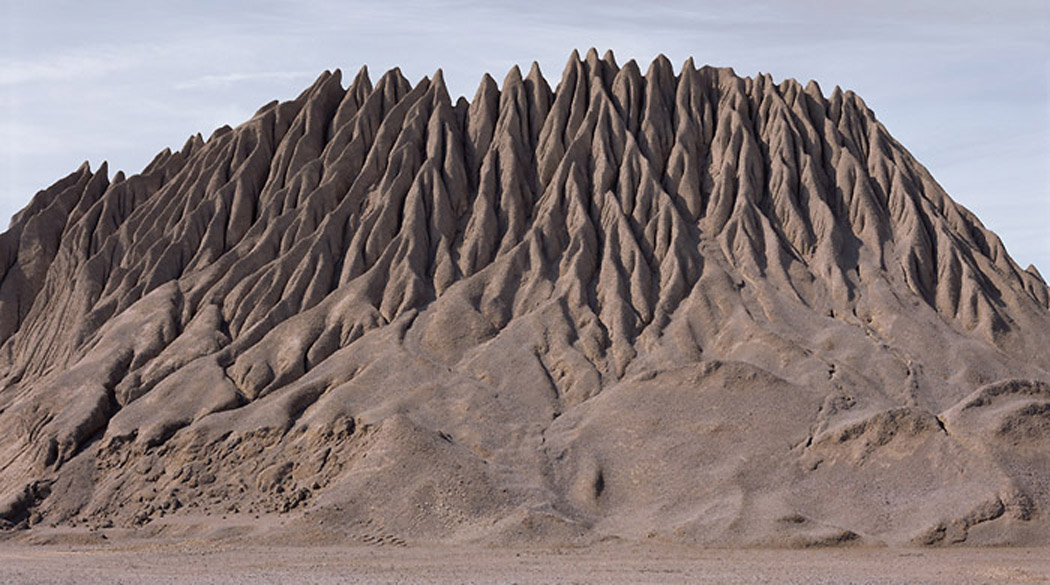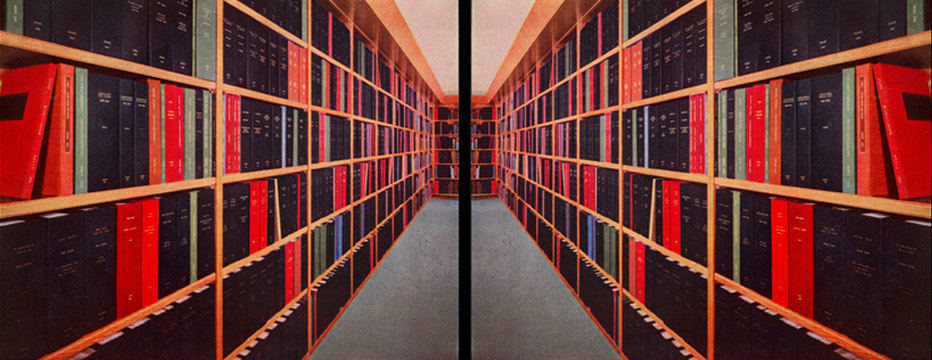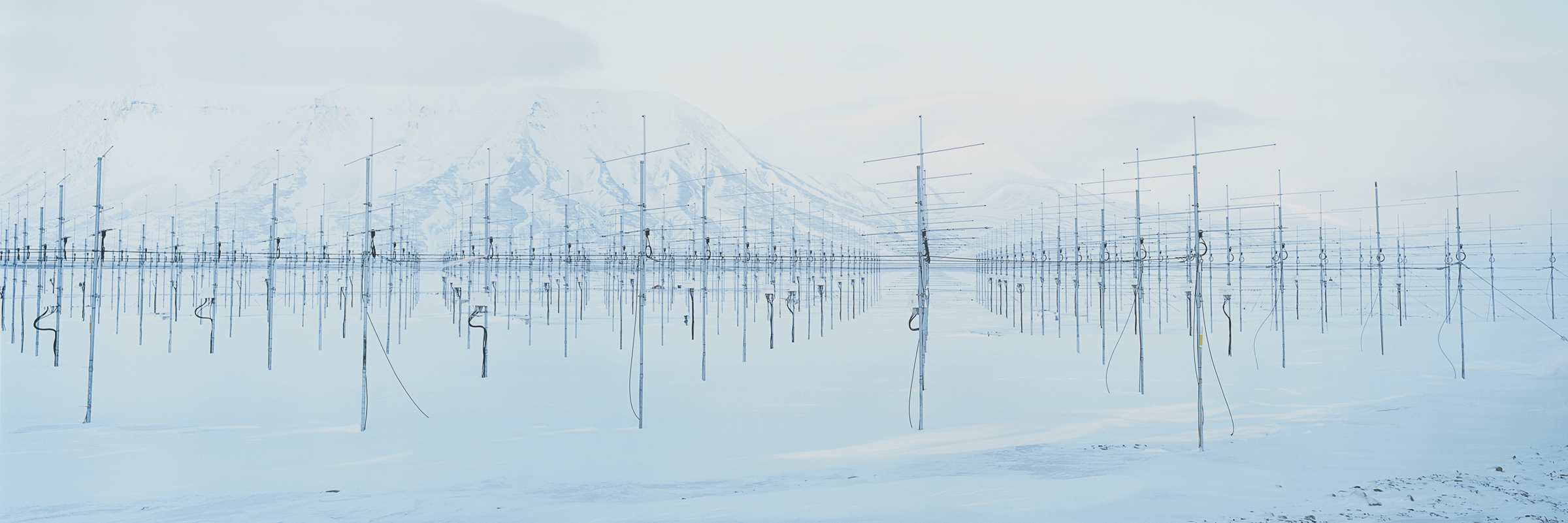
The Nevada Museum of Art has assembled over the course of twenty-odd years an impressively broad yet tightly focused collection of landscape photography, highlighting the constantly changing relationship between people and landscapes. Most of the photographs in the collection are inspired by the conceptual, technical, and aesthetic shifts wrought by the New Topographics and the Dusseldorf School. The Altered Landscapes collection is curated by Ann M. Wolfe who took over as the museum’s curator in 2006 and under her guidance the collection has expanded in many positive and interesting directions.
The current exhibition on display and its title, The Altered Landscape: Photographs of a Changing Environment, has a specific lineage, from the “man-altered landscape” of the New Topographics (1972), to John Pfal’s Altered Landscape (1981) to the Nevada Museum of Art’s first iteration of this exhibition, The Altered Landscape (1999). Altered Landscape is not only a world-class collection of contemporary landscape photography, it is notable for its inclusion of a diversity of photographers. The collection has struck a decent gender balance between men and women photographers which is quite significant. Women continue to be extremely underrepresented in landscape work and museum collections which makes Wolfe’s work on the collection commendable. The diversity of views represented in the Nevada Museum of Art’s collection signals an evolution in the museum’s curatorial direction and more broadly in the institutional understanding of landscape in general.
What is an altered landscape? Aren’t all landscapes somehow altered? It is difficult to describe an altered landscape since the reciprocal relationship between humans and the environment is always being altered. The catalogue for this exhibition tries to offer an answer to these questions, citing the visible changes rendered by human activity in the landscape and the accelerated rate of development over the past fifty years. It has become popular in certain circles to refer to our present moment as the Anthropocene—a new era in geologic time where human interventions on the landscape have surpassed natural processes in shaping the terrain. The impact of an exhibition like this shapes how we think about landscape.
The history of landscape photography is particularly important in considering this exhibition. Landscape photography is often viewed historically as re-creating the pictorial and sublime landscapes that were common in eighteenth and nineteenth century painting. The difference between the popular view of painting and photography was that was that photography was exact; photography was seen as objective and scientific and painting as more subjective and often missing important details due to the artists editing. It should be safe to say that culturally this notion of photos as truth has been surpassed and that photography is indeed subjective. Photography is inherently selective and can be manipulated for effect beyond just the cropping and color correction that goes into making a good photo. These notions still persist but were brought into question by the New Topographics, who presented stark, ugly, or everyday landscapes which both questioned the picturesque landscapes and consequently expanded the definition of what landscape photography could look like.
Following in the tradition of the New Topographics, this collection documents a particular type of man-nature relationship: the rapid changes that have happened since World War II, the birth of sculptural earthworks, suburbanization, climate change, mass tourism, and the global impacts of expanded capitalist development. This collection represents the markings made on the earth by human intervention from farming, irrigation, mining, infrastructure projects, and urban development. As the curators note, very few of the photos contain people in them but human impact is obvious.
The concept of nature itself has been changing too. It is not adequate to think about nature as isolated from human impact. With innovative uses of technology needed to support and maintain “nature”, every park and wilderness is a literally a garden: controlled, shaped, commodified, and cultivated. Further, humans now successfully clone living organisms, pushing their control and understanding of biology exponentially further each year. This technologically-enhanced nature is the next frontier for landscape photography–green houses, biology labs or as some have put it hyper-nature.
The Altered Landscape collection succeeds at expanding the definition of landscape photography precisely by including works that are not of “pristine nature” or even depictions of nature-as-such. There are models, earthwork documentation, and other conceptual works that traditionally would only questionably be considered landscape work. It is fitting that this expanded sense of landscape comes from Reno, Nevada which historically and geographically is a high desert frontier outpost and thus strategically located to understand the West in its context.
The Altered Landscape is on display until January 15, 2012.
All Images courtesy from the Collection of Nevada Museum of Art, The Altered Landscape, Carol Franc Buck Collection, and used with permission

The Nevada Museum of Art has assembled over the course of twenty-odd years an impressively broad yet tightly focused collection of landscape photography, highlighting the constantly changing relationship between people and landscapes. Most of the photographs in the collection are inspired by the conceptual, technical, and aesthetic shifts wrought by the New Topographics and the Dusseldorf School. The Altered Landscapes collection is curated by Ann M. Wolfe who took over as the museum’s curator in 2006 and under her guidance the collection has expanded in many positive and interesting directions.
The current exhibition on display and its title, The Altered Landscape: Photographs of a Changing Environment, has a specific lineage, from the “man-altered landscape” of the New Topographics (1972), to John Pfal’s Altered Landscape (1981) to the Nevada Museum of Art’s first iteration of this exhibition, The Altered Landscape (1999). Altered Landscape is not only a world-class collection of contemporary landscape photography, it is notable for its inclusion of a diversity of photographers. The collection has struck a decent gender balance between men and women photographers which is quite significant. Women continue to be extremely underrepresented in landscape work and museum collections which makes Wolfe’s work on the collection commendable. The diversity of views represented in the Nevada Museum of Art’s collection signals an evolution in the museum’s curatorial direction and more broadly in the institutional understanding of landscape in general.
What is an altered landscape? Aren’t all landscapes somehow altered? It is difficult to describe an altered landscape since the reciprocal relationship between humans and the environment is always being altered. The catalogue for this exhibition tries to offer an answer to these questions, citing the visible changes rendered by human activity in the landscape and the accelerated rate of development over the past fifty years. It has become popular in certain circles to refer to our present moment as the Anthropocene—a new era in geologic time where human interventions on the landscape have surpassed natural processes in shaping the terrain. The impact of an exhibition like this shapes how we think about landscape.
The history of landscape photography is particularly important in considering this exhibition. Landscape photography is often viewed historically as re-creating the pictorial and sublime landscapes that were common in eighteenth and nineteenth century painting. The difference between the popular view of painting and photography was that was that photography was exact; photography was seen as objective and scientific and painting as more subjective and often missing important details due to the artists editing. It should be safe to say that culturally this notion of photos as truth has been surpassed and that photography is indeed subjective. Photography is inherently selective and can be manipulated for effect beyond just the cropping and color correction that goes into making a good photo. These notions still persist but were brought into question by the New Topographics, who presented stark, ugly, or everyday landscapes which both questioned the picturesque landscapes and consequently expanded the definition of what landscape photography could look like.
Following in the tradition of the New Topographics, this collection documents a particular type of man-nature relationship: the rapid changes that have happened since World War II, the birth of sculptural earthworks, suburbanization, climate change, mass tourism, and the global impacts of expanded capitalist development. This collection represents the markings made on the earth by human intervention from farming, irrigation, mining, infrastructure projects, and urban development. As the curators note, very few of the photos contain people in them but human impact is obvious.
The concept of nature itself has been changing too. It is not adequate to think about nature as isolated from human impact. With innovative uses of technology needed to support and maintain “nature”, every park and wilderness is a literally a garden: controlled, shaped, commodified, and cultivated. Further, humans now successfully clone living organisms, pushing their control and understanding of biology exponentially further each year. This technologically-enhanced nature is the next frontier for landscape photography–green houses, biology labs or as some have put it hyper-nature.
The Altered Landscape collection succeeds at expanding the definition of landscape photography precisely by including works that are not of “pristine nature” or even depictions of nature-as-such. There are models, earthwork documentation, and other conceptual works that traditionally would only questionably be considered landscape work. It is fitting that this expanded sense of landscape comes from Reno, Nevada which historically and geographically is a high desert frontier outpost and thus strategically located to understand the West in its context.
The Altered Landscape is on display until January 15, 2012.
All Images courtesy from the Collection of Nevada Museum of Art, The Altered Landscape, Carol Franc Buck Collection, and used with permission

The Nevada Museum of Art has assembled over the course of twenty-odd years an impressively broad yet tightly focused collection of landscape photography, highlighting the constantly changing relationship between people and landscapes. Most of the photographs in the collection are inspired by the conceptual, technical, and aesthetic shifts wrought by the New Topographics and the Dusseldorf School. The Altered Landscapes collection is curated by Ann M. Wolfe who took over as the museum’s curator in 2006 and under her guidance the collection has expanded in many positive and interesting directions.
The current exhibition on display and its title, The Altered Landscape: Photographs of a Changing Environment, has a specific lineage, from the “man-altered landscape” of the New Topographics (1972), to John Pfal’s Altered Landscape (1981) to the Nevada Museum of Art’s first iteration of this exhibition, The Altered Landscape (1999). Altered Landscape is not only a world-class collection of contemporary landscape photography, it is notable for its inclusion of a diversity of photographers. The collection has struck a decent gender balance between men and women photographers which is quite significant. Women continue to be extremely underrepresented in landscape work and museum collections which makes Wolfe’s work on the collection commendable. The diversity of views represented in the Nevada Museum of Art’s collection signals an evolution in the museum’s curatorial direction and more broadly in the institutional understanding of landscape in general.
What is an altered landscape? Aren’t all landscapes somehow altered? It is difficult to describe an altered landscape since the reciprocal relationship between humans and the environment is always being altered. The catalogue for this exhibition tries to offer an answer to these questions, citing the visible changes rendered by human activity in the landscape and the accelerated rate of development over the past fifty years. It has become popular in certain circles to refer to our present moment as the Anthropocene—a new era in geologic time where human interventions on the landscape have surpassed natural processes in shaping the terrain. The impact of an exhibition like this shapes how we think about landscape.
The history of landscape photography is particularly important in considering this exhibition. Landscape photography is often viewed historically as re-creating the pictorial and sublime landscapes that were common in eighteenth and nineteenth century painting. The difference between the popular view of painting and photography was that was that photography was exact; photography was seen as objective and scientific and painting as more subjective and often missing important details due to the artists editing. It should be safe to say that culturally this notion of photos as truth has been surpassed and that photography is indeed subjective. Photography is inherently selective and can be manipulated for effect beyond just the cropping and color correction that goes into making a good photo. These notions still persist but were brought into question by the New Topographics, who presented stark, ugly, or everyday landscapes which both questioned the picturesque landscapes and consequently expanded the definition of what landscape photography could look like.
Following in the tradition of the New Topographics, this collection documents a particular type of man-nature relationship: the rapid changes that have happened since World War II, the birth of sculptural earthworks, suburbanization, climate change, mass tourism, and the global impacts of expanded capitalist development. This collection represents the markings made on the earth by human intervention from farming, irrigation, mining, infrastructure projects, and urban development. As the curators note, very few of the photos contain people in them but human impact is obvious.
The concept of nature itself has been changing too. It is not adequate to think about nature as isolated from human impact. With innovative uses of technology needed to support and maintain “nature”, every park and wilderness is a literally a garden: controlled, shaped, commodified, and cultivated. Further, humans now successfully clone living organisms, pushing their control and understanding of biology exponentially further each year. This technologically-enhanced nature is the next frontier for landscape photography–green houses, biology labs or as some have put it hyper-nature.
The Altered Landscape collection succeeds at expanding the definition of landscape photography precisely by including works that are not of “pristine nature” or even depictions of nature-as-such. There are models, earthwork documentation, and other conceptual works that traditionally would only questionably be considered landscape work. It is fitting that this expanded sense of landscape comes from Reno, Nevada which historically and geographically is a high desert frontier outpost and thus strategically located to understand the West in its context.
The Altered Landscape is on display until January 15, 2012.
All Images courtesy from the Collection of Nevada Museum of Art, The Altered Landscape, Carol Franc Buck Collection, and used with permission

Walking into a recently opened storefront next to a high end clothing store, stomach
on a particularly hip part of Valencia street, one hardly knows what to expect. The front is plain and blacked out except for the neon pink, Scanners decal on the window. Inside is a bookstore with a ragtag collection of bookshelves and a relatively spacious building. In the center, books are spread out down a long table, swap-meet style. The atmosphere is somewhere between a proper bookstore and a DIY project. The content similar that of a more artistically inclined info-shop, definitely familiar to counterculture. The brilliance of Scanners is how carefully curated the space is. Scanners exists to “highlight the materiality of the book in a world of increasing dematerialization” and it is no surprise that the owner/curators Nick Hoff and Matt Borruso love books and were able to put together such a project so successfully. Both are avid bibliophiles and experienced booksellers along with being a writer (Nick) and an artist (Matt). The collection of available texts is broad but specific: art, architecture, DIY building manuals from the 1970’s back-to-land movement, critical theory, San Francisco history, and teetering stacks of old Mad Magazines. Between gallery catalogs on the center table there’s feminist treatises and latex fetish books. All told Scanners has many gems available and the prices are absolutely affordable for what is available. Unfortunately, this little-slice of paradise for bibliophiles is around for only another week and will close its doors at the end of October.
Scanners has over the course of October coordinated an interesting group of speakers hosting multiple events each week with wide ranging discussions of book collecting, hoarding, archives, and the joy of reading. The talks have been archived on the Scanners Project event page.
If you are in San Francisco this month, check out Scanners while you still can.


